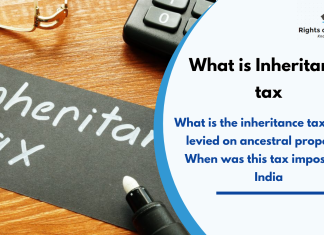Money Rules Changing: These rules which will directly affect your pocket are changing from...
Money Rules: Many rules related to money are going to change from May 1. In such a situation, it will have a direct impact on the pockets of common people. We are telling you...
ICICI Bank blocked thousands of credit cards, know the reason behind this
ICICI Bank Credit Card: ICICI Bank has blocked more than 17000 credit cards. The bank has also released the list of customers whose credit cards have been blocked.
ICICI Bank Blocked Credit Card: The country's...
DGCA New Rules: Now flight tickets will be cheaper, DGCA has issued this new...
DGCA new rules: An instruction has been issued by the Directorate General of Civil Aviation (DGCA), in which planning is underway to make the base fare of flights more affordable for passengers.
New rule to...
Income Tax Return Filing: Should you file income tax return now or wait till...
The Income Tax Department has notified all the utilities and forms for filing returns. Through these, online returns can be filed. But, along with people having income from salary, there are many people who...
What is Inheritance tax: What is the inheritance tax that is levied on ancestral...
In the US, inheritance tax applies only to a portion of inherited property. That too when the value of this property exceeds a limit. Property up to the value of 10 lakh dollars is...
Modi government transferred money to the accounts of 28 crore people, did you get...
EPFO: PM Modi has given good news to crores of people. Are you also waiting for interest to come in your provident fund account? EPFO has informed that it has transferred the interest in...
BSF Recruitment 2024: Golden opportunity to become an officer in BSF, apply immediately in...
Sarkari Naukri UPSC BSF Recruitment 2024: This is a good opportunity for those who want a job in Border Security Force (BSF). If you are also applying for these posts, then read all these...
Bank Holiday Alert: Big news for bank customers! Bank Holiday for three days from...
Bank Holiday April 2024: Today voting is taking place for various Lok Sabha seats in many states across the country. This is the second phase of the ongoing Lok Sabha elections 2024...
Customers who depend...
7th Pay Commission: Big news for central employees! Will dearness allowance be zero (0)...
Central government employees news: The data for calculation of dearness allowance was to be released on March 28. But, it was not done. In such a situation, two situations are emerging now. First, the...
Schools and colleges will remain closed in 8 districts of UP, there will be...
There will be a holiday in schools and colleges tomorrow, 26th April, in eight districts of UP. Apart from this, there will also be a ban on opening of liquor shops and private establishments....
Money Rules Changing: These rules which will directly affect your pocket are changing from...
Money Rules: Many rules related to money are going to change from May 1. In such a situation, it will have a direct impact...
ICICI Bank blocked thousands of credit cards, know the reason behind this
ICICI Bank Credit Card: ICICI Bank has blocked more than 17000 credit cards. The bank has also released the list of customers whose credit...
DGCA New Rules: Now flight tickets will be cheaper, DGCA has issued this new...
DGCA new rules: An instruction has been issued by the Directorate General of Civil Aviation (DGCA), in which planning is underway to make the...
Income Tax Return Filing: Should you file income tax return now or wait till...
The Income Tax Department has notified all the utilities and forms for filing returns. Through these, online returns can be filed. But, along with...
What is Inheritance tax: What is the inheritance tax that is levied on ancestral...
In the US, inheritance tax applies only to a portion of inherited property. That too when the value of this property exceeds a limit....































